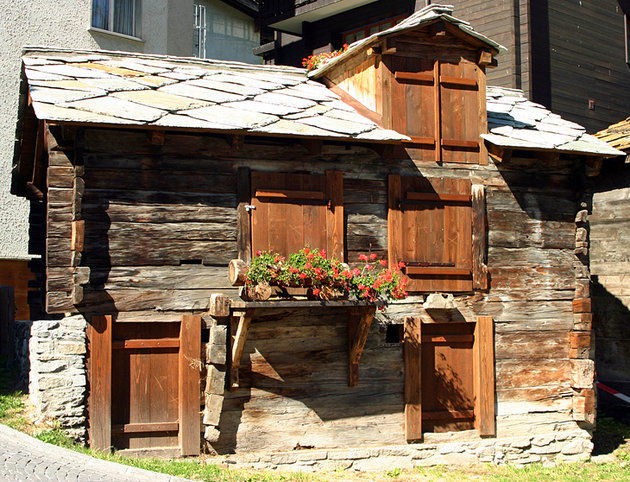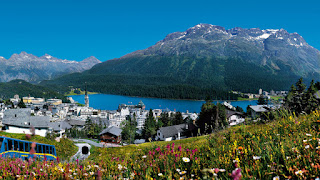Top 10 Tourist Attractions In Zermatt
In a green valley enclosed between steep mountainsides, the climbing and winter sports capital of the Valais region is also one of Switzerland's great international resorts. Zermatt is dominated by the definitive mountain, the huge and gracefully curved Matterhorn, making almost any angle a postcard view. You can't drive to Zermatt. The closest you can get by automobile is a large carpark about five kilometers from the village, to which there are shuttles by electric vehicles. Trains from Brig deposit passengers right in the village; from there, a rack railroad, funicular, and cableways lift visitors to an endless series of panoramic alpine views as well as skiing and hiking trails. Zermatt is famous for its magnificent long ski runs, with terrain for all skill levels, but it also offers outdoor sports for other seasons. There is a mountain trail for cyclists from the Winkelmatten up to the Furi, and the Zermatt Alpin Center offers expert guides for climbers year-round. Hotels, fine restaurants, and luxury spas abound in Zermatt, but summer or winter, it's the mountains that are still the prime tourist attraction.
Accommodation: Where to Stay in Zermatt
1. The Matterhorn
Without the sharp pyramid of the Matterhorn rising as a dramatic backdrop, Zermatt would be another pretty little Swiss village instead of a world-famous symbol of the Alps and of Switzerland itself. Along with making Zermatt the Swiss poster child, the mountain defines the town and gives it a year-round appeal that no other ski resort can match. The 4,478-meter peak was first climbed in 1865 by a British team of five and two Swiss guides. Although a few thousand people master it each year, it should still only be attempted by well-experienced climbers.
2. Winter Sports
Thanks to the surrounding glaciers, Zermatt offers year-round skiing, with ski terrain at
altitudes between 2,500 and 3,900 meters and Switzerland's highest vertical drop, more than 2,133 meters. In the summer, you can ski on the Breithorn plateau, via the cableway to the Kleines Matterhorn, and on the 3,500-meter Plateau Rosa near the Theodul Pass. One of the great ski experiences in the Alps is taking the lifts to the top and skiing over the Theodul Pass and down into the Italian ski resort of Cervina. Heli-skiing, high-altitude ski-tours, Nordic trails, and night skiing are other options, but you don't need to ski to enjoy winter sports here. There are natural-ice skating rinks, snowshoe trails, and several curling rinks. Because it is far enough away from major cities, Zermatt doesn't attract the big weekend crowds, and you can access three separate ski areas on one pass.
3. The Gornergrat Railway
The Gornergrat Bahn, Europe's highest mountain railroad running over open country, takes 45 minutes to climb 10 kilometers to the summit of the Gornergrat. The rack-railroad climbs the east side of Nikolai valley and up the slopes of the Riffelberg in a wide curve, with ever more impressive views of the Matterhorn. Riffelberg, at 2,582 meters altitude, has a hotel and restaurant with a terrace that is a popular sundeck for skiers. A few minutes' walk below the Rotenboden station, at 2,819 meters, is the Riffelsee with the peak of the Matterhorn mirrored in its water - the view is at its most spectacular in the morning. The line then runs high above the Gorner glacier to the summit station, at 3,089 meters, from which it is only a five-minute climb to the famous Gornergrat observatory on a rocky ridge above the Gorner glacier. From here is one of the most magnificent panoramas in the Alps: in the middle, the Matterhorn, with the Breithorn, the twin peaks of Zwillinge, the Lyskamm, and Monte Rosa to the left; to the north, the peaks of the Mischabel group, including the 4,545-meter Dom - the highest peak entirely within Switzerland.
You can walk from the Gornergrat back down to Zermatt. The path drops steeply for the first 90 minutes to the Findel Glacier Restaurant where a 45-minute detour leads up to the Findel Glacier. From the restaurant, the walk continues via the resort village of Findeln, from which it is about an hour to Zermatt.
4 Hinterdorf
5 Kleines Matterhorn
One of the most spectacular trips - in a place where spectacular scenery becomes almost ordinary - is on the highest cable car inEurope, from the Trockener Steg to the north face of the Kleines Matterhorn. From the upper station, there is a lift to the summit of the Kleines Matterhorn, at 3,884 meters. A cableway from Furgg leads to the Schwarzsee, an alpine lake with a restaurant. Inside the glacier that lies between the Klein Matterhorn and the Breithorn is the Glacier Palace, which you can access via a lift that takes you 15 meters below the surface into a world of sparkling crystals. Carved out of the glacier are tunnels and halls with ice sculptures and a snack bar.
6. Sunnegga
A funicular climbs in a tunnel from the center of Zermatt to the Sunnegga sun terrace at 2,289 meters. Here, you'll find a year-round restaurant, and in the summer, several other attractions. Children splash in the crystal water of the Leisee, and there is a marmot watching station to see these furry little mammals that live in alpine burrows. This is also the starting point for several hikes. In winter, Wolli's adventure park is a non-threatening first ski experience for beginners, and experienced skiers continue on the gondolas, chairlifts, and a cable car up to the Rothorn area's trails and snowfields. You can also link from here to the Gornergrat ski pistes.
7. Matterhorn Museum
The history of Zermatt as a resort is closely tied to the early climbers, and you'll learn their fascinating story in this well-designed contemporary museum. You'll see dramatic excerpts from Der Berg Ruft (The Mountain Calls), filmed in Zermatt in 1937 to 1938, along with artifacts, photos, and a relief of the Matterhorn showing the different routes to the summit. But there's a lot more than climbing here. You'll see furnishings and home interiors illustrating mountain life and dip further into the past with finds from the Neolithic Age.
Outside the museum is one of Zermatt's most popular highlights, the charming 1906 Marmot Fountain. A family of bronze marmots cavorts among the cascades, polished to a high shine by the pats of a century of passers-by. Behind the fountain is a beautiful life-sized bronze ibex.Address: Kirchplatz, Zermatt
8. Gorner Gorge
Since the last ice age, the melting snows and ice from the Gorner Glacier have swelled the Gornervispe each spring, and as it swirls and churns through the rock, it has carved a dramatic chasm. About a 15-minute walk from the village of Zermatt, wooden walkways descend into this world of waterfalls where greenish serpentine rock is carved into fantastic shapes. In the winter, you can book an adventure trip through the gorge with a mountain guide.
9. Theodul Glacier and Pass
Cable cars ascend from Zermatt to Winkelmatten via Furi to the Schwarzsee, and via Furi and Furgg to the Trockener Steg at the upper Theodul Glacier, an altitude of 2,939 meters. From the Trockener Steg, a ski lift, also open in the summer, goes up to the Furgg saddle at 3,365 meters on the Italian border. Another ski lift runs via Gandegg to the Theodul Pass. You can take a five-hour glacier tour with a guide, hiking to the Hermettji then, 2.25 hours beyond, cross the crevassed Upper Theodul glacier with a rope to the pass. The Theodul Pass was already being used in the fourth century as a route into Italy. From Testa Grigia, near the top, a cable car runs down to Cervina, a resort town on the Italian side. In the winter, skiers cross the frontier to ski both areas in the same day.
From the cable car station at Furi, it's about a half-hour walk to the Dossen Glacier Garden, where you can see the effects of the last ice age on the landscape as the Gorner Glacier, the second-largest in the Alps, retreated. Giant pot holes, carved into solid rock by the swirling whirlpools under glacial waterfalls, look as though some giant scoop has gouged them out. You can also see the remains of a soapstone quarry here.
10 English Church
Built in 1870 by the Alpine Club, the Church of St. Peter provided a place of worship for English guests, who at that time made up most of those coming to Zermatt. Many of the donations that financed it were in memory of climbers who had lost their lives in the ascent, and the graves of several of these are in its churchyard. Inside are a number of plaques in memory of mountaineers with close ties to Zermatt and the surrounding peaks.
| | |
| | |
| | |
| | |





























